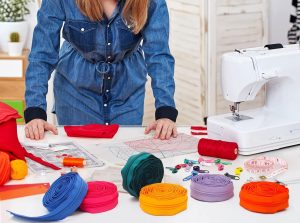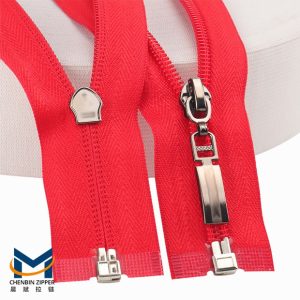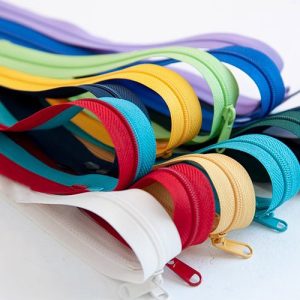
Exploring Different Types of Zippers
By material: Metal zippers, plastic zippers, nylon zippers
Nylon zippers also named polyester coil zippers are modern and flexible, light-weight and boast a broad range of applications, ranging from garments to bags, due to their resistance; then there are metal zippers which have a rugged look and are usually employed in jeans jackets and other heavy applications due to their strength and durability; resin molded zippers for its rust grading resistance characteristic and dyeability in colors that go well with just any selection of fabric, suspension this category of zippers between the metal cylinder and the resilient nylon style.
| Material Type | Advantages | Common Uses |
| Metal | Strong, long-lasting, classic appearance | Jeans, jackets, tough applications |
| Plastic | Rust-resistant, dyeable in various colors | Versatile fabric applications |
| Nylon | Lightweight, flexible, durable | Clothing, bags |
By function: Closed-end zippers, open-end zippers, two-way zippers
There are various types of zippers which can be categorized accordingly with purpose and usage. Closed-end also does not come apart and stays together bottom and is great for tents and pillows where you need to have a thing or two to stay together. Closed-end zippers are used in jackets and coats whereas open-end ones are completely separated when unzipped. They allow for separation on both ends. There are two main kinds of two-way zippers — end or closed-end zippers have two sliders and allow you to open the zipper from both ends (or both in the middle).
| Function Type | Description | Ideal Use Cases | Key Feature |
| Closed-end | Stays attached at both ends | Tents, pillows | Fixed closure |
| Open-end | Separates completely at one end | Jackets, coats | Both ends can detach |
| Two-way | Opens from both ends | Applications requiring more flexible access | Added flexibility in access options |
Specialty types: Waterproof zippers, invisible zippers
Purpose-made zippers have special features to fulfill certain needs—water-resistant zippers have additional seals to prevent water from entering and are best for functional outdoor garments, such as raincoats and marine products. In occasions for which zippers need to blend into the fabric and not act as a focal point — such as in women’s dresses or pillowcases, nylon coil, continuous zippers are usually utilized to provide an uninterrupted look without breaking up the look of the garment.
| Purpose | Zipper Type | Unique Features | Suitable Items |
| Need waterproof function | Waterproof zippers | Have extra seals to keep out water | Outdoor gear such as raincoats and marine items |
| Require zippers to blend seamlessly with fabric | Nylon coil, continuous zippers | Create a sleek look without interfering with the garment’s style | Women’s dresses, pillowcases |
Choosing a Zipper Based on Project Needs
Project type: Clothing, bags, outdoor gear
When choosing a zipper for your project keep in mind the nature of the item being crafted.
Style and function do make a difference when it comes to clothing for jackets or work clothes they can be more discreet or more big-name designs (depending on the trends of the time in the fashion industry selection is key) while durability is also primary here, for bags or purses it might be good to go for strong metal or plastic zipper. Waterproof zippers are a must among outdoor gear to protect against uncertain weather.
Durability considerations: Heavy-duty vs. lightweight projects
Your zipper’s durability needs to align with the requirements of your project. Sturdy two-way end or close-end options are ideal for heavy-duty tasks like overalls or sleeping bags as they can handle pressure and frequent usage well. For projects, like delicate dresses opting for invisible nylon zippers is a more delicate choice that avoids adding extra bulk unnecessarily.
Aesthetics: Matching color, size, and design
When selecting a zipper for your project it’s important to think about the aesthetics foremost. Make sure the color goes well with the fabric – plastic and nylon zippers come in various colors that can be customized for a perfect match. Consider the size of the zipper based on how you plan to use it – go for ones for coats and smaller ones for skirts. Remember to choose designs that fit in with the overall theme of what you’re creating.
Zipper Specifications and Sizes
Zipper numbering and what it means
Zipper sizes are labeled with numbers that show the width of the chain when it’s closed, such as # 2 (for lightweight) # 4 (for weight), and # 8 (for heavy duty). This numbering method assists in choosing the zipper for your project taking into account its weight specifications.
How to select the right length and width for your project
Choosing the size is crucial, for proper functioning; being too short can make it ineffective, and being too long might necessitate trimming, which could impact performance if not executed accurately. Pre-cut options designed to fit perfectly streamline this task by offering made solutions crafted for the convenience of manufacturers aiming to kickstart projects promptly without sacrificing excellence.
By considering these factors you can select a zipper that not only fulfills its practical needs but also improves the overall look of your project. This could involve adding a touch with decorative uses or making sure bedding items, like mattresses, cushions, and upholstery fit snugly to maintain clean, fresh, and peaceful sleep environments.
Tips for Sewing with Zippers
Preparing the Fabric and Zipper
Before stitching zippers onto your fabric pieces, it’s essential to read both the material and the zipper for an experience. Start by opting for the kind of zipper that suits your project taking into account aspects like fabric type, utility, and visual attractiveness. Once you’ve made your selection consider pre-washing your fabric if required to avoid any shrinking post zipper installation. This precaution is especially crucial for fibers prone to contraction when laundered.
Position the zipper against your fabric so that it aligns with the seams or edges where you plan to attach it later on with pins or basting stitches before sewing it permanently in place for a neat finish on the right side of the fabric ensuring the zipper pull is facing downwards if using an invisible nylon coil continuous zipper.
Techniques for Inserting Zippers
The method by which you add zippers to your project is entirely based on what you are working on. Use a zipper foot to install zippers so you can sew close to the zipper teeth without catching the zipper in your seams. A zipper that is closed is only visible on the fabric, thus ensuring immaculate seams, hence the suitable for products such as cocktail dresses for ladies.
Open-end zippers are most often found on jackets and the way to use them is to first sew down one side of the zipper tape to the edge of your fabric, and then repeat. Zipper mesh must match up correctly so when you zip it you have a perfect alignment on top and bottom.
If you need a zipper to open from both ends—like on overalls or sleeping bags—be sure to place each slider in the correct position before sewing so it can open from either end (or the center) and maintain some practicality and function. Say you have a project that requires zippers on both sides, like overalls or sleeping bags, before sewing it in you want to position each slider when in the zipper, so it opens from one or both ends, or center.
Troubleshooting Common Issues
When dealing with zippers in sewing projects you may encounter some problems like fabric puckering or seams not aligning properly. To prevent puckering make sure to maintain tension on both sides of the fabric and consider using interfacing for lighter fabrics to add stability. If you notice seams are misaligned it’s likely due to pinning; take the time to check alignment before sewing them permanently and adjust your pins as needed.
If you encounter a zipper that gets stuck when you’re trying to put it on or use it try moving it and forth gently while adding a bit of soap or wax along the teeth—this can make it easier to zip without causing any harm to the fabric around it.
Additional Sewing Accessories to Enhance Your Project
Buttons and Snaps
Adding buttons and snaps to your project not enhances its functionality and style but also offers a different way of fastening compared to zippers particularly in areas, like cuffs or collars where smaller closures are favored for a sleeker look instead of bulkier options.
Hook-and-Eye Closures
Hook and eye fastenings provide a way to secure formal attire or delicate clothing without drawing attention to visible hardware that could take away from the overall look of the outfit, especially on garments like dresses where maintaining a sleek appearance is important while ensuring a secure closure at key areas such as the waistline in combination, with concealed nylon coil zippers.
Velcro Fasteners
Velcro straps are great, for fastening things in kids’ clothes or clothes designed for easy use. You can also pair them with plastic zippers to keep things secure while still being convenient to use!
When you pick out items and choose the right zippers that are customized for each project. Whether it’s for designing clothes or adding decorative touches. You’ll get outcomes that meet practical needs and elevate the overall look guaranteeing satisfaction with every endeavor.












